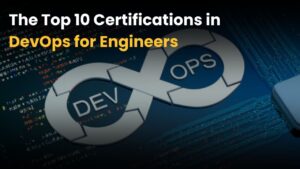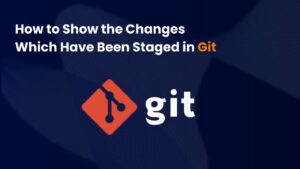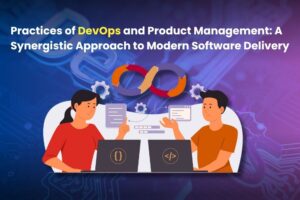1. Introduction to CI/CD
1.1 Definition and Purpose of CI/CD
Continuous Integration and Continuous Deployment are referred to as CI/CD. Development teams can regularly incorporate their code changes into a shared repository thanks to this contemporary method.
DevOps Training in Pune provides a great environment to upskills these valuable skills.
1.2 Benefits of Implementing CI/CD Pipelines
- The implementation of CI/CD pipelines is associated with a variety of advantages: v
- Early Delivery of Outcomes: Thanks to automated processes, teams are able to provide new features and updates faster.
- Improved Quality of Products/Services: Automated tests prevent the introduction of new defects in the changed code.
- Fostering of Amity Across Digital Teams: CI/CD incorporates changing of one member’s work with other members’ work on a regular basis, creating a culture where collaboration is ideal.
- Reducing the Probability of Manual Mistakes: Deployment processes are less dangerous due to automation of the process and hence less human error.
1.3 Common CI/CD Tools and Technologies
Several tools are popular for managing CI/CD processes:
- Jenkins: An open-source, free automation server that makes it possible to create, implement, and automate every step of the software development life cycle.
- GitLab CI: A powerful tool integrated with GitLab to streamline the CI/CD process.
- CircleCI: It is popular for its quickness and not complicated which is aimed at immediate use on GitHub repositories.
- Travis CI: A cloud-based CI service that supports numerous programming languages.
2. Understanding Docker
2.1 What is Docker?
Containers bundle an application together with all its dependencies, making them portable and able to run in various computing environments without issues.
2.2 Key Features of Docker
Some standout features of Docker include:
• Portability
• Isolation
• Scalability
2.3 Docker Best Practices for Development
Think about these best practices to make the most of Docker:
Make use of official photos: To make sure you’re using secure and well-maintained versions, start with official Docker images.
- Keep Images Small: Minimize image sizes by removing unnecessary dependencies.
- Leverage Multistage Builds: This allows you to create smaller and more efficient images by separating build-time and runtime stages.
3. Overview of Kubernetes
3.1 Kubernetes Architecture and Components
Several essential parts make up Kubernetes:
• Nodes: The actual or virtual computers that house containers.
• Pods
• Services: Usually via a reliable endpoint, these specify a logical collection of pods and a method of accessing them.
3.2 Advantages of Using Kubernetes for Container Management
Implementing Kubernetes offers several advantages:
- Load Balancing: Distributes incoming traffic efficiently across containers.
- Self-Healing: Reschedules and replaces containers that malfunction or stop responding on their own.
- Rolling Updates: Allows for gradual updates to applications, minimizing downtime.
4. Integrating Docker with Kubernetes
4.1 Preparing Your Docker Images for Kubernetes
To seamlessly integrate Docker with Kubernetes, you should:
- Optimize Your Dockerfile: Write an efficient Dockerfile that minimizes image size and build time.
- Version Your Images: Use a versioning scheme to manage and track your images, ensuring that you can easily roll back if needed.
4.2 Deploying Docker Containers in Kubernetes
Deploying Docker containers to Kubernetes involves:
- Creating a Deployment: Establish the number of application replicas you wish to run when creating a deployment.
- Setting Up Services: Allow external access to your applications through Kubernetes services, ensuring traffic is directed appropriately.
4.3 Managing Continuous Deployment with Docker and Kubernetes
For effective management of continuous deployment:
- Automate Deployments: To automate the deployment process to your Kubernetes cluster, use CI/CD tools such as Jenkins or GitLab CI.
- Implement Monitoring: Use tools like Prometheus and Grafana to monitor application performance and container health.
5. Enhancing CI/CD Pipelines with Docker and Kubernetes
5.1 Automation and Orchestration for CI/CD
Docker and Kubernetes work together to automate the deployment pipeline—making it not just easy but efficient. This orchestration allows for quick and reliable releases, helping teams to be responsive to changes.
5.2 Monitoring and Logging in CI/CD Pipelines
Keeping an eye on your CI/CD pipeline is crucial. Tools like ELK Stack (Elasticsearch, Logstash, Kibana) make monitoring easier, allowing developers to visualize logs and metrics in real time. This proactive approach helps catch problems early.
5.3 Addressing Challenges in Integration and Deployment
- Configuration Management: Keeping configurations in sync can be tricky; using tools like Helm can help manage Kubernetes resources effectively.
- Networking Problems: Kubernetes networking can be complicated; it’s critical to comprehend the various service kinds and their functions.
6. Summary
6.1 Key Takeaways from the Integration
Docker and Kubernetes integration improves CI/CD pipelines by making application deployment, scaling, and management more effective. Implementing best practices can further optimize this integration.
6.2 Future Trends in CI/CD with Docker and Kubernetes
As technologies evolve, expect to see more advancements in:
- Serverless Operations: Moving towards function-based deployment models.
- Enhanced Security: Increasing emphasis on automated security checks in the CI/CD process.
6.3 Final Thoughts on Streamlining Development Processes
Integrating Docker with Kubernetes not only simplifies CI/CD but also paves the way for faster, more reliable application delivery. So, let’s embrace these tools, enhance our development workflows, and enjoy the journey toward efficient software delivery!






